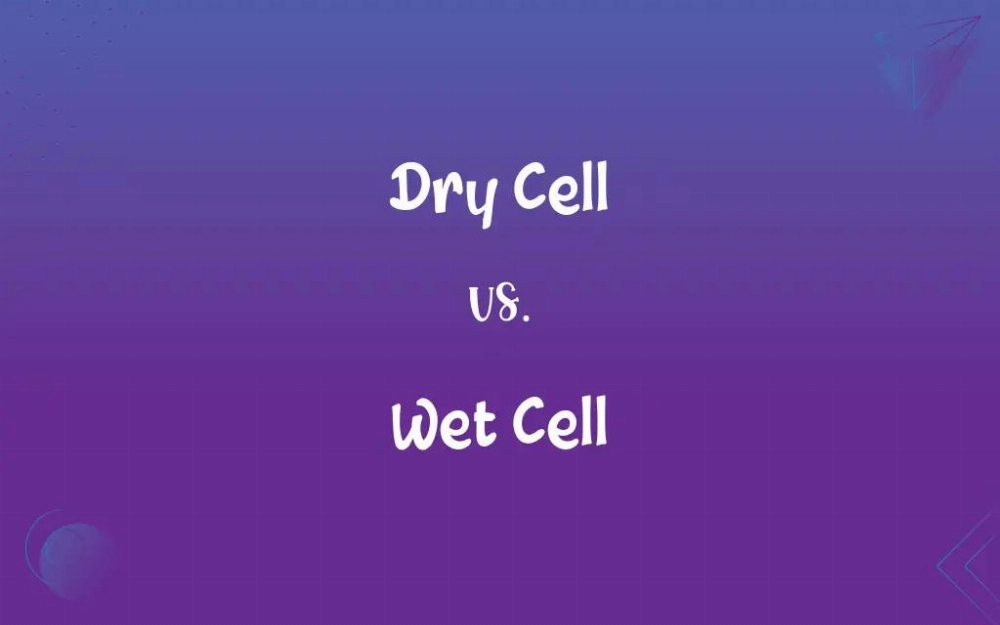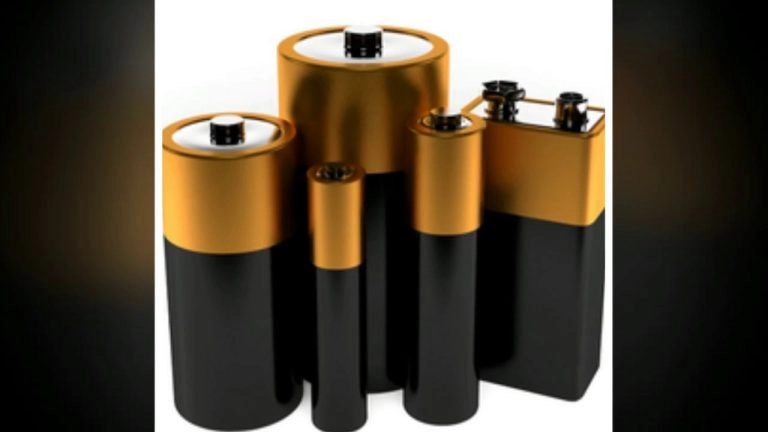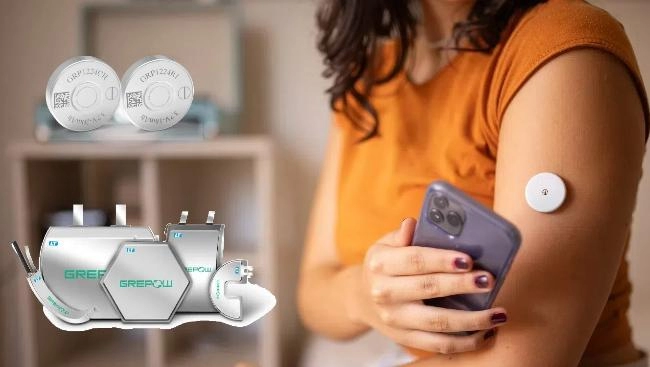When selecting the right power source for different applications, the choice between dry cell and wet cell batteries is an important factor. Understanding the specific characteristics of these two types of batteries can help you make informed choices based on your needs. Next, we will explore dry cell and wet cell batteries in detail, focusing on their differences, advantages, and disadvantages.
Part 1: Dry Cell Batteries Explained
Composition and Structure of Dry Cell Batteries
A dry cell battery is a primary battery composed of several important components, including the anode, cathode, and electrolyte paste.
-
Anode (Negative Electrode):
The anode is usually made of zinc and acts as the electrode where oxidation (loss of electrons) occurs during battery discharge. -
Cathode (Positive Electrode):
The cathode is usually composed of a mixture of carbon or graphite and manganese dioxide, and is the site where reduction (gain of electrons) occurs during discharge. -
Electrolyte:
Unlike wet cell batteries, dry cell batteries use a paste-like electrolyte. This paste is usually a mixture of ammonium chloride and zinc chloride, which acts as a medium for ion conduction between the anode and cathode. -
Separator:
The separator is usually made of paper or similar material and is used to isolate the anode and cathode, preventing short circuits while allowing ions to pass through. -
Container:
A sealed container made of zinc or steel houses the internal components of the battery. This shell protects the battery and serves as the negative terminal for electrical connections.
Advantages and Disadvantages of Dry Cell Batteries
Advantages:
-
Portability:
Dry cell batteries are compact, lightweight, and easy to carry. They are ideal for portable devices such as flashlights, toys, and radios. -
Leakage Resistance:
Unlike wet cell batteries, which contain liquid electrolytes and may leak if damaged, dry cell batteries use a paste-like electrolyte, which significantly reduces the risk of leakage and makes them safer to use. -
Durability:
Thanks to their sealed construction, dry cell batteries are more durable than wet cell batteries and can effectively prevent internal damage and long-term corrosion. -
Long Shelf Life:
Dry cell batteries have a long shelf life and are suitable for devices that are not frequently used or as emergency backup power sources.
Disadvantages:
-
Limited Capacity:
Compared to wet cell batteries, dry cell batteries typically have lower energy density and capacity, so they may need to be replaced more frequently in high-drain devices. -
Voltage Degradation:
The voltage of dry cell batteries gradually decreases during discharge, which can affect the performance of devices that require a stable power supply, leading to decreased performance or premature shutdown. -
Environmental Impact:
Some dry cell batteries contain harmful substances such as mercury and cadmium, which can be environmentally hazardous if not disposed of properly. Therefore, it is important to follow proper disposal methods to minimize environmental risks.
Part 2: Wet Cell Batteries Explained
Composition and Structure of Wet Cell Batteries
Wet cell batteries, also known as flooded batteries, contain a liquid electrolyte solution to facilitate ion movement between the anode and cathode. The main components of a wet cell battery are:
-
Anode (Negative Electrode):
The anode in a wet cell battery is usually made of lead (Pb). During discharge, the lead is oxidized, releasing electrons. -
Cathode (Positive Electrode):
The cathode is usually made of lead dioxide (PbO2), which is where reduction occurs, as lead dioxide gains electrons during discharge. -
Electrolyte Solution:
Wet cell batteries use a liquid electrolyte, typically a dilute sulfuric acid (H2SO4) solution, to facilitate ion flow between the anode and cathode. -
Container:
Wet cell batteries are typically housed in a durable container made of plastic or similar material that holds the liquid electrolyte and provides protection against leaks or spills.
Advantages and Disadvantages of Wet Cell Batteries
Advantages:
-
Higher Energy Capacity:
Wet cell batteries typically have higher energy density and capacity than dry cell batteries, making them more suitable for high-drain devices such as automobiles and industrial machinery. -
Longer Lifespan:
Wet cell batteries typically have a longer lifespan than dry cell batteries due to their larger internal components and ability to be recharged multiple times, especially in deep cycle applications. -
Consistent Power Output:
Wet cell batteries maintain a more stable voltage throughout the discharge cycle, providing consistent power to devices that require uninterrupted operation.
Disadvantages:
-
Weight and Size:
Wet cell batteries are typically bulkier than dry cell batteries, making them less portable and unsuitable for applications where size is a constraint. -
Susceptibility to Leaks:
Because wet cell batteries contain liquid electrolytes, they are susceptible to leaks if damaged or mishandled, which can damage surrounding equipment. -
Maintenance Requirements:
Wet cell batteries typically require more maintenance than dry cell batteries, such as regularly adding water to maintain electrolyte levels and prevent electrolyte depletion.
Conclusion
Dry cell batteries excel in portability, safety, and long shelf life for low-power consumer electronics, while wet cell batteries offer higher energy and longer life for high-power industrial applications. Understanding the characteristics of these two types of batteries can help you choose the most suitable type for your needs. For example, if you are looking for a more efficient battery solution for high-demand applications, exploring options such as marine batteries may provide valuable insights. Marine batteries, often lithium-ion based, offer high energy density and long lifespans, making them suitable for demanding applications like powering boats and off-grid systems.
Wet Cell Batteries: Components, Advantages, and Disadvantages
Wet cell batteries utilize a liquid electrolyte, typically comprising a solution of sulfuric acid (H2SO4) and water (H2O). This liquid facilitates the movement of ions between the anode and cathode, allowing the battery to operate.
Key Components of Wet Cell Batteries
-
Electrolyte: A liquid, usually a mixture of sulfuric acid and water, that plays a crucial role in the transfer of ions between the battery’s electrodes.
-
Separator: A separator, made from a porous material like rubber or plastic, prevents direct contact between the anode and cathode, allowing ions to flow freely and preventing short circuits.
-
Container: Typically made of durable plastic or rubber, the container holds the electrolyte and provides the necessary structural support for the internal components.
Advantages of Wet Cell Batteries
-
High Capacity: Wet cell batteries have a higher energy density and greater capacity compared to dry cell batteries. This makes them ideal for applications requiring long-term, continuous power, such as automobiles and backup power systems.
-
Cost-Effective: Wet cell batteries are often more economical than dry cell batteries, thanks to the readily available and low-cost materials like lead and sulfuric acid.
-
Easy to Maintain: Wet cell batteries are relatively simple to maintain. Users can extend the battery life by replenishing the electrolyte with distilled water. This makes them ideal for applications like vehicles that require regular maintenance.
-
High Discharge Rate: These batteries can handle high discharge rates, making them excellent for applications that require bursts of power.
Disadvantages of Wet Cell Batteries
-
Spillage Risk: A significant drawback of wet cell batteries is the potential for electrolyte spillage. Leaks can occur if the battery is damaged or mishandled, and the sulfuric acid can be hazardous.
-
Bulky and Heavy: Due to the liquid electrolyte, wet cell batteries are generally heavier and bulkier than dry cell batteries, which limits their use in portable applications where size and weight are critical.
-
Maintenance Needs: While maintaining wet cell batteries is not difficult, they require ongoing maintenance. This includes checking the electrolyte levels, adding distilled water, and monitoring for corrosion to ensure optimal performance.
-
Safety Risks: Wet cell batteries contain sulfuric acid, a corrosive substance that can cause burns if it comes into contact with skin or eyes. It is essential to take proper safety precautions when handling or maintaining these batteries.
Applications of Dry Cell Batteries
Dry cell batteries are well-known for their portability, reliability, and convenience. A variety of electronic devices commonly use them. Some key applications include:
Flashlights
Dry cell batteries are commonly used in flashlights, providing a compact and long-lasting power source for outdoor activities, emergencies, and everyday use. Their reliability ensures consistent lighting.
Remote Controls
Many remote controls, from TVs to air conditioners, rely on dry cell batteries. Their small size and lightweight design make them ideal for handheld devices.
Portable Electronics
Radios, MP3 players, and other small electronic devices often use dry cell batteries as their power source. They are easy to use and portable, making them ideal for powering devices on the go.
Clocks and Watches
Dry cell batteries are frequently used in clocks, watches, and other timekeeping devices, providing a reliable power source to maintain accurate time without the need for frequent battery changes.
Smoke Detectors
Many smoke and carbon monoxide detectors use dry cell batteries. These batteries provide long-lasting power, making them ideal for applications where reliability is critical.
Part 3: Uses of Dry Batteries
Dry batteries are commonly used in various devices and instruments that require a reliable and long-lasting power source. Some typical applications include:
Safety Devices
Due to their portability, extended shelf life, and stable performance, dry batteries are commonly used to power safety devices such as smoke detectors, fire alarms, and carbon monoxide detectors. Their reliability ensures critical protection during emergencies.
Calculators
Dry batteries are frequently used to power handheld calculators and other electronic devices in educational and professional settings. Their compact size and long lifespan make them ideal for these everyday applications.
Emergency Lighting
Dry batteries are crucial in emergency lighting systems, including exit signs and flashlights. They provide backup power during power outages or emergencies, ensuring that essential lighting remains operational to ensure safety.
Portable Tools
Many portable tools, including cordless drills, screwdrivers, and electronic measuring devices, are powered by dry batteries. Their lightweight nature and reliable power supply make them well-suited for use in construction, maintenance, and DIY projects.
Part 4: Uses of Wet Batteries
Wet batteries, known for their high energy capacity and sustained power supply, are utilized across various industries, including automotive, marine, telecommunications, and renewable energy systems. Here are some common applications:
Automotive Industry
Wet batteries are extensively used in vehicles such as cars, trucks, motorcycles, and boats to provide the necessary starting power for internal combustion engines. They also power auxiliary systems like lights, radios, and air conditioning, making them essential for everyday transportation.
Marine Applications
In the marine industry, wet batteries are critical for powering boats and ships. They support engine starting, navigation systems, communication equipment, and onboard appliances, while their design withstands harsh marine environments and provides stable performance onboard.
Telecommunications
Telecommunications infrastructure, including cell towers, radio transmitters, and data centers, relies on wet batteries to provide backup power during grid interruptions. These batteries ensure that critical communication services remain operational during emergencies.
Renewable Energy Systems
Wet batteries, such as those used in solar and wind power installations, play a vital role in renewable energy systems by storing excess energy generated during peak production periods. They serve as energy storage solutions for off-grid and hybrid systems, ensuring a stable power supply during periods of low production.
Emergency Backup Power Systems
Wet batteries are commonly installed in emergency backup power systems in critical facilities such as hospitals, airports, and data centers. They provide essential power during power outages or emergencies, ensuring essential services continue to operate.
Industrial Equipment
Wet batteries are widely used in various industrial applications, including material handling equipment, uninterruptible power supplies (UPS), and backup generators. These batteries provide reliable power for manufacturing processes, warehouse operations, and emergency backup power.
Electric Vehicles
Electric vehicles, such as golf carts, forklifts, and scooters, often rely on wet batteries as their power source. These batteries provide the necessary energy density and power output for the propulsion and auxiliary systems of electric vehicles.
Standby Power Systems
Wet batteries are commonly used in standby power systems for residential, commercial, and industrial facilities. These systems ensure uninterrupted operation during power outages or voltage fluctuations, protecting sensitive equipment from potential disruptions.
Part 5: Main Differences Between Dry and Wet Batteries
The differences between dry and wet batteries are quite significant, particularly in terms of electrolyte form, maintenance requirements, and suitability for different applications.
Electrolyte Form
- Dry Batteries: Use a paste-like electrolyte that is immobilized by a separator to prevent leakage and has a lower water content.
- Wet Batteries: Use a liquid electrolyte solution, typically a free-flowing mixture of sulfuric acid and water.
Composition Structure
- Dry Batteries: Consist of a zinc anode, a carbon cathode, and a paste-like electrolyte.
- Wet Batteries: Consist of metal electrodes and a liquid electrolyte, typically sulfuric acid, to facilitate the chemical reactions that generate electricity.
Understanding the distinct differences between dry and wet batteries helps in selecting the appropriate battery type for different applications.
Dry Cell vs. Wet Cell Batteries: A Comparison
Introduction
Batteries are essential for powering a wide range of devices, from everyday gadgets to heavy machinery.
There are primarily two types of batteries: dry cell and wet cell. Understanding the differences between them is crucial for selecting the right battery for specific needs.
Dry Cell Batteries
Dry cell batteries are widely used due to their compact and leak-proof design. These batteries feature a paste-like electrolyte, which is typically immobilized, preventing leaks or spills. This makes them ideal for portable applications such as flashlights, remote controls, and portable radios. They are known for their safety and minimal maintenance because they are sealed and typically designed for single use.
Characteristics of Dry Cell Batteries:
- Electrolyte: Paste-like or gelled, solidified to prevent leakage.
- Applications: Commonly used in consumer electronics like flashlights, radios, and toys.
- Maintenance: Minimal maintenance, typically single-use.
- Safety: Generally safer due to the sealed design, reducing the risk of electrolyte leakage.
Wet Cell Batteries
On the other hand, wet cell batteries are designed for high energy capacity and continuous power supply. They contain a liquid electrolyte solution in which electrodes are immersed. This type of battery is commonly found in applications requiring substantial power, such as car batteries, boats, and telecommunications backup systems.
Characteristics of Wet Cell Batteries:
- Electrolyte: Liquid electrolyte solution.
- Applications: Suitable for industries and applications requiring continuous power, such as automotive and backup systems.
- Maintenance: Requires regular maintenance, including checking and replenishing electrolyte levels.
- Safety: They pose higher risks, such as electrolyte leakage, which can be hazardous if the battery is damaged.
Key Differences
-
Construction and Electrolyte Type:
- Dry cell batteries use a paste-like electrolyte, while wet cell batteries use a liquid electrolyte.
-
Applications:
- Dry cell batteries are best suited for portable, low-energy devices, while wet cell batteries are best for high-capacity, continuous power applications, such as cars or backup systems.
-
Maintenance Requirements:
- Dry cell batteries require no maintenance as they are typically single-use, while wet cell batteries require regular checks and maintenance.
-
Safety Considerations:
- Dry cell batteries are safer with a lower risk of leakage, while wet cell batteries can be hazardous if damaged due to the corrosive liquid electrolyte.
Frequently Asked Questions
How can you differentiate between wet cell and dry cell batteries?
You can distinguish between wet cell and dry cell batteries by examining the electrolyte. Wet cell batteries contain a liquid electrolyte, while dry cell batteries contain a paste-like or gelled electrolyte.
Which type of battery lasts the longest?
Lithium-ion batteries are known for their long lifespan, featuring high energy density and low self-discharge rates, making them ideal for rechargeable uses. For more information on how long a battery can last, check out The Lifespan of Lithium Battery.
Do dry cell batteries last longer?
Dry cell batteries, particularly rechargeable ones like lithium-ion batteries, can outlast traditional single-use batteries in terms of total lifespan and number of charge cycles.
Are wet cell batteries more environmentally friendly than dry cell batteries?
Wet cell batteries, such as lead-acid batteries, can pose environmental concerns due to the risk of electrolyte leakage and their heavy metal content. Dry cell batteries are often considered more environmentally friendly due to their sealed design, which reduces the risk of leakage.
When are dry cell batteries better than wet cell batteries?
The choice between dry cell and wet cell batteries depends on the intended application. Dry cell batteries are ideal for portable devices, while wet cell batteries are better suited for high-energy, continuous applications, such as automotive or backup systems.
What is a Portable Charger?
A portable charger is a device designed to power mobile devices. This guide explains what it is, the materials it’s made of, and how it works to provide a convenient power source for your devices.
How to Choose a Portable Charger That Suits Your Needs: Capacity, Performance, and Other Factors
Choosing the right portable charger is crucial for ensuring your devices stay powered when you need it most. This guide explores key factors such as capacity, performance, safety features, and other important considerations to help you make an informed choice.









